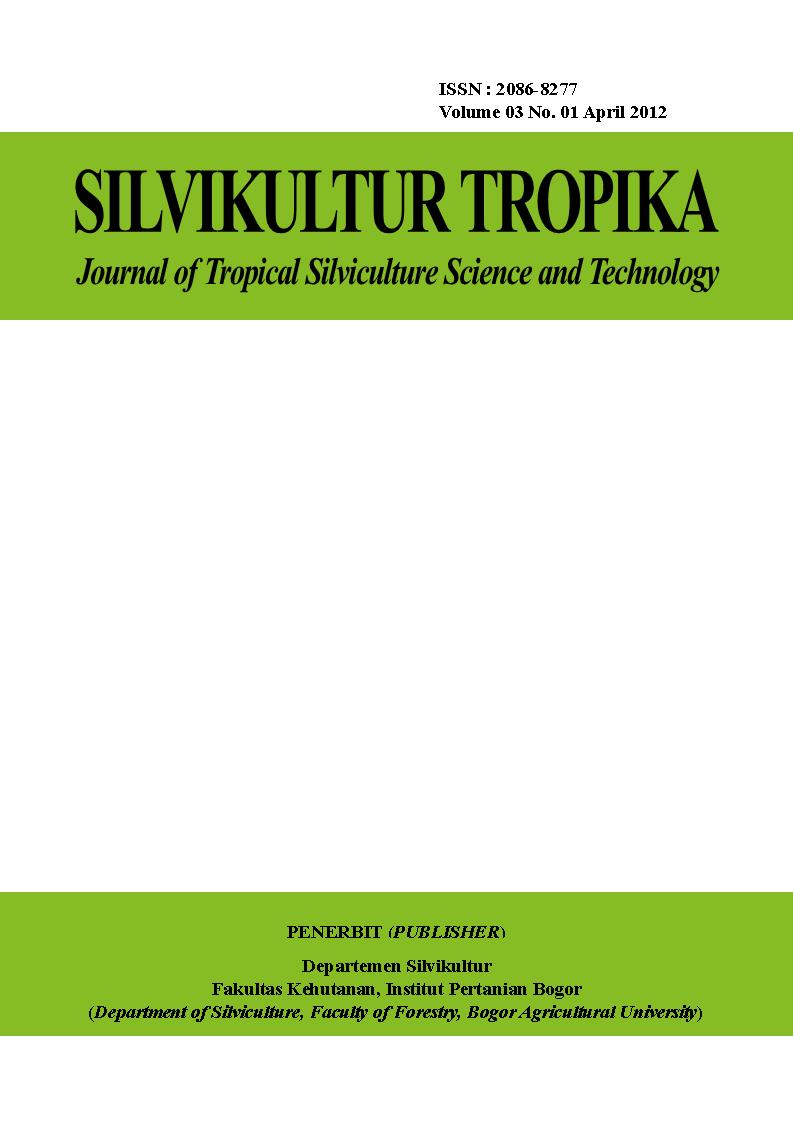Uji Patogenitas Ganoderma terhadap Bibit Tanaman Sengon (Paraserienthes falcataria (L) Nielsen)
Abstract
Patogenity Test of Ganoderma Over the Sengon Seedlings (Paraserienthes falcataria (L) Nielsen)
Sengon tree (Paraserianthes falcataria (L.) Nielsen) often used by farmers as component planted in agroforestry system as well as shade trees planted in between other crops such as coffee and cacao. Ganoderma infection, basal stem rot disease is becoming more prevalent and causing significant loss in sengon tree and other estate crops. The aim of this research is to understand how the effect of the inoculation to the sengon seed.
There are two majors in the research i.e. non inoculation and inoculation treatments. Each treatment consisted of three observation blocks that are considered equal and each block consisted of four plants (the seeds sengon age one and a half months) as replicates. The non inoculation treatments are all combinations of root and foodbase treatments. Foodbase treatment itself is divided into two i.e. the sengon wood piece with varying size (3, 4, and 5 cm diameters) and PDA (Potato Dextrose Agar) without inoculation of Ganoderma lucidum SP1 (Ganoderma SP1) from Ciamis area (from lamtoro tree) and isolates of G. lucidum SP2 (Ganoderma SP2) (from sengon plants) derived from the collection of Forest Pathology Laboratory.
In general, the result of control treatments calculation has a better average growth compared to the inoculation treatment. This result can be seen on the accretion parameter of heights and leaflets. It is possible to do the observation on the treatment of the inoculation with the negative growth tendencies. The calculation on pathogenity test shows that Ganoderma SP2 has more pathogenic than Ganoderma SP1.










